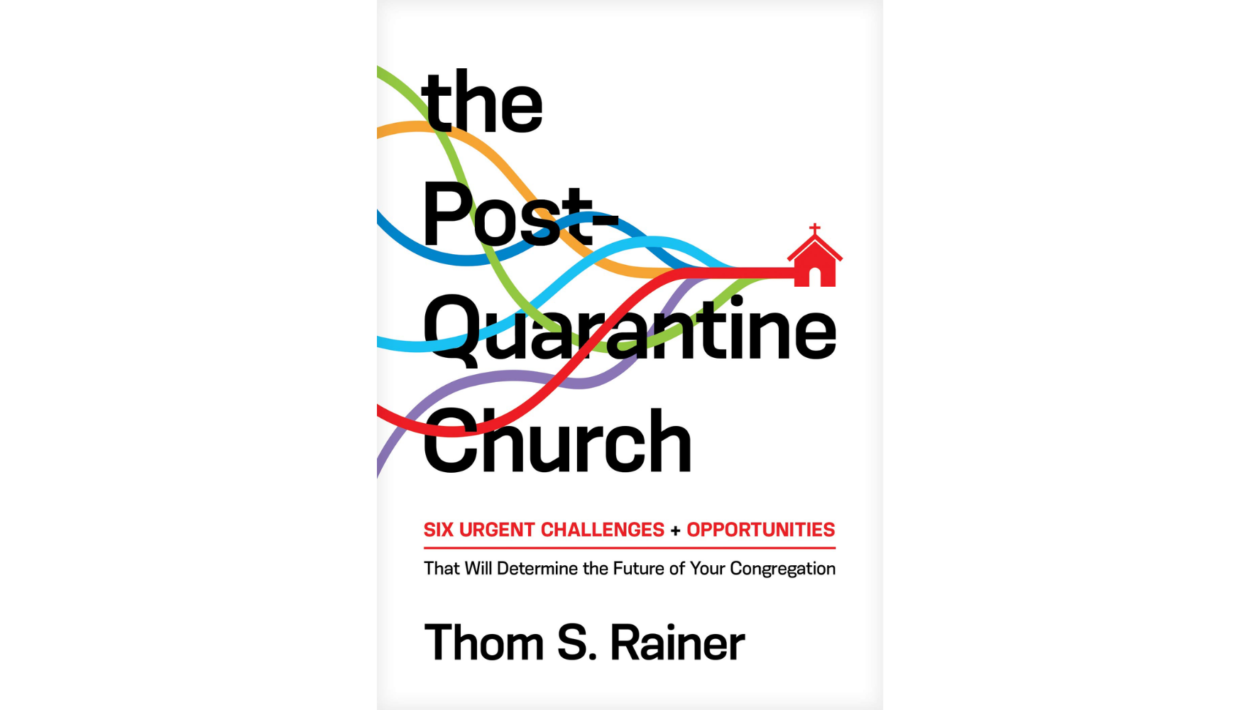By Thom S. Rainer
Carol Stream, IL: Tyndale Momentum (2020)
Hardcover edition, 115 pages.
Reviewed by JOANNE CORTES
COVID-19 has impacted practically every church in the United States and across the world. In this book, The Post-quarantine Church, Thom Rainer looks at what our church may look like in this new era, post pandemic. He does not claim to have all the answers but asks the question that have many of us have been asking: “What will happen next?” Thom Rainer offers six urgent challenges and opportunities that may help a church determine the kind of future it will have. The first challenge Rainer suggests is that the church should gather differently and better, find innovative ways to use the church facility, and be ready to think of creative ways to reach people currently not being reached (p. 11).
The second challenge involves seizing the opportunity to reach the digital world by making a plan and thinking of social media channels that might be most effective for the church right now. One thing to be aware of that may jeopardize the church is being digitally busy while having no effectiveness. It is better to simplify content being shared (p. 25).
The third challenge suggested by Rainer is to reconnect with the neighborhood. Be a church in the community, for the community by having a clear purpose and mission, and being a positive influence to those in the near vicinity (p. 39).
Fourth, Rainer recommends prayer. Take prayer to a new and powerful level by praying regularly and asking members, as well as the community, to join in this challenge. Prayer can happen in an empty church building, via technology—basically anywhere (p. 55).
The fifth challenge reminds churches to, once again, rethink the use of the facility, as previously mentioned in challenge one. After the quarantine, churches can practically begin with a “new slate” and serve their communities in innovative ways. This is also a good time to partner with new organizations and groups (p. 69).
The last challenge (the sixth) suggested by Rainer involves encouraging churches to make lasting changes that will make a difference. To think strategically and to reevaluate ministry objectives, committee budgets, job descriptions, etc., so the church can be positioned in such a way so as to achieve success post-pandemic (p. 85).
The final chapter in this book examines challenges faced by the church that can also be opportunities. Rainer lists nine key changes for the post-pandemic church that also reinforce the earlier six challenges previously provided:
- Simplicity will be vitally important.
- Only outwardly focused churches will survive.
- Worship service gatherings will be smaller.
- “Multi” will multiply.
- Staff and leadership realignment will focus more on digital proficiency.
- “Stragglers” will become a subject of outreach and focus.
- Digital worship services will be newly proposed.
- Ministry training will change dramatically.
- Pastors will leave their lead positions for second-chair roles.
Thom Rainer concludes the final chapter by articulating that “the postquarantine era may prove to be one of the most challenging seasons for churches and their leaders. The opportunity to lead change is likely greater than at any other point in our lifetimes” (p.110). The pandemic has changed the world and the way we are used to “doing” church, yet there is a great opportunity in that we are practically given a blank slate—an opportunity to rethink, recreate, and revamp church.
Thom Rainer finalizes by imagining how the first-century Christians felt as they were trying to reach a world that needed to hear the good news of the resurrected Savior. I can only imagine their excitement and their fear. They knew the path ahead would be both difficult and dangerous. But they also knew their efforts would be worth the cost. (p. 110)
I recommend this easy-to-read book to any leader or pastor whose church is struggling because of COVID-19, who needs help in rethinking what church should look like after quarantine, who is ready to begin to think outside of what is normal, and who may be unsure if the church is truly being effective and doing all it can to continue the mission during these uncertain times. As we enter this new era—this new “normal”—we cannot forget that Jesus promises us that no matter what we go through, even if it be a pandemic, He is with us always, even to the end of the age (Matt. 28:19–20). Let us not be afraid of what may come, but trust in the one who is with us all the way.
JOANNE CORTES is an associate pastor at Beltsville Seventh-day Adventist Church of the Potomac Conference in Staunton, Virginia, USA.

